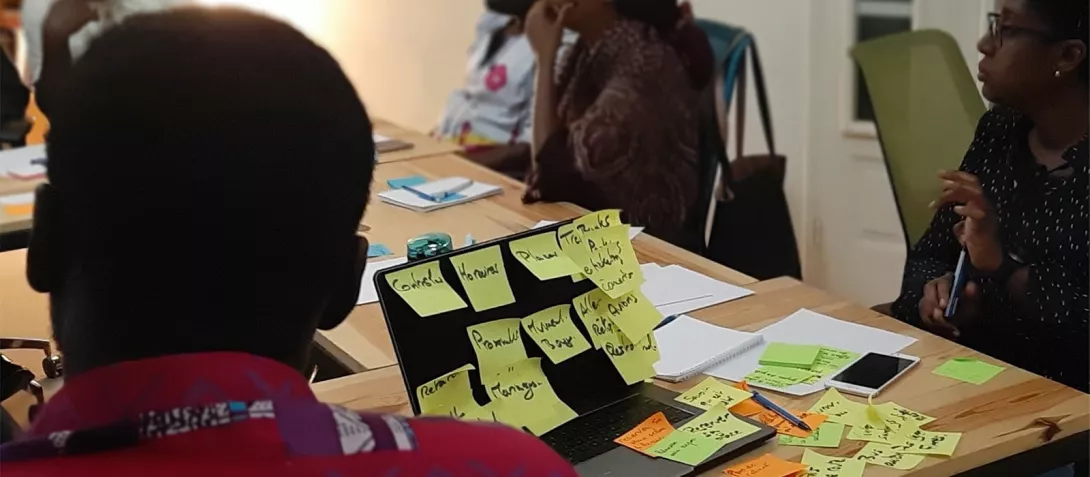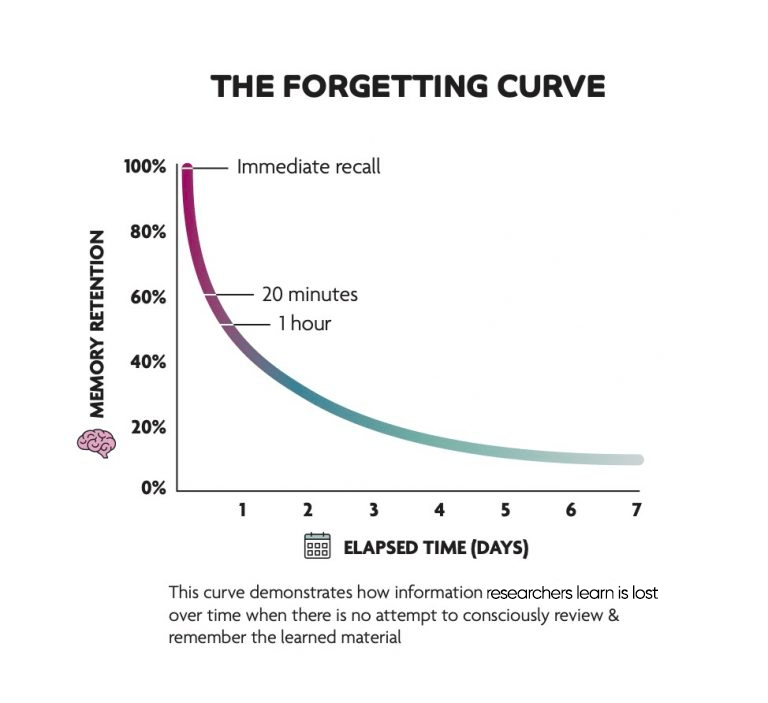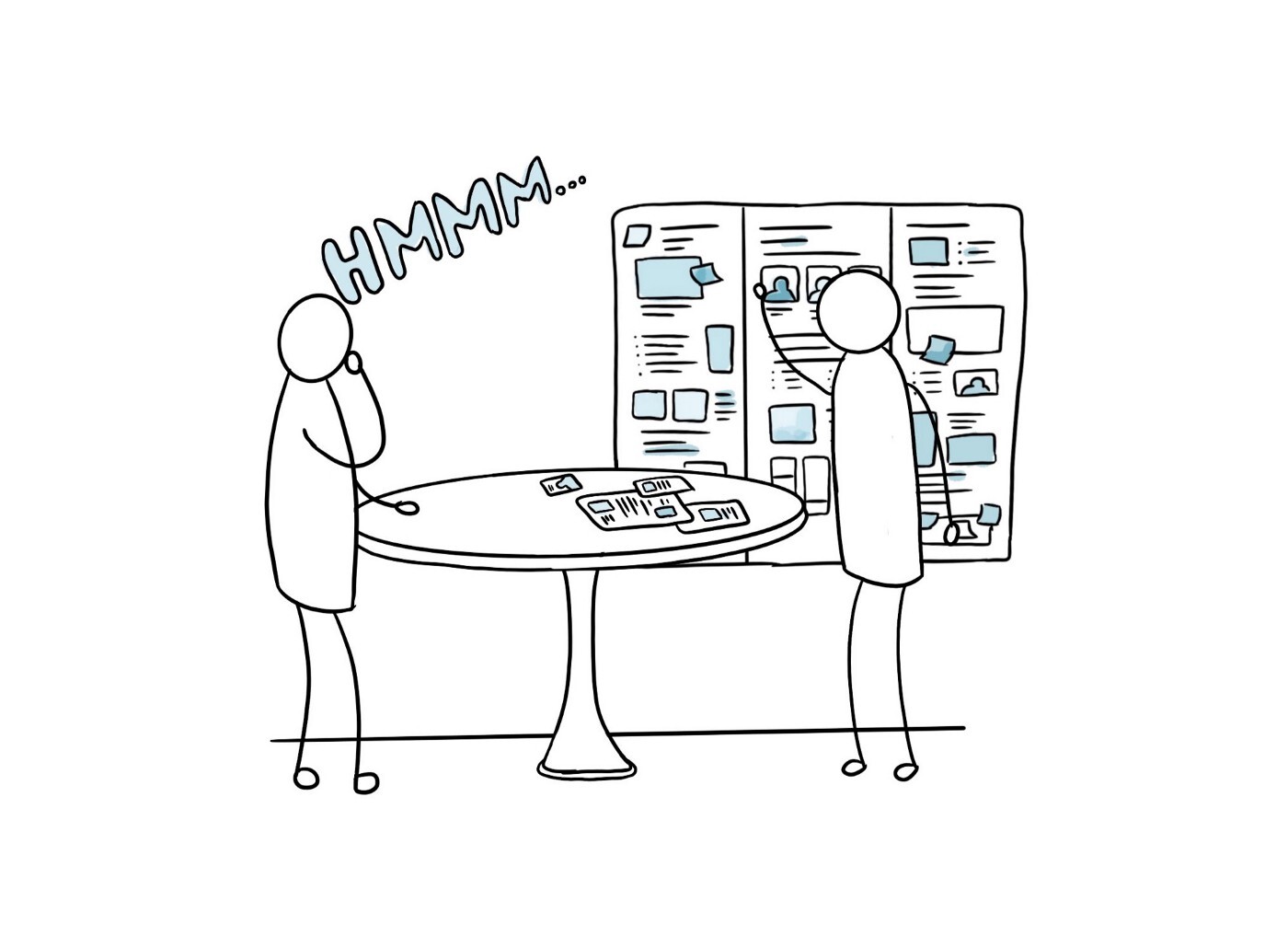
Let’s face it, memory fades very quickly, especially when conducting several research interviews over extended periods of time, with different people and all the other intricate complexities of life. Psychologists estimate that people will forget about 80% of what they’ve learned within 24 hours, and this is represented in the forgetting curve hypothesized by renowned German Psychologist, Hermann Ebbinghaus, indicating that there is a decline of memory retention over time, when there is no effort to retain it.

Image by Organising Students
As a UX researcher specializing in Agritech research in Africa, I am constantly confronted with significant information overload in my quest to find answers to the issues I am confronted with. As a result of this, I have come to realize the immense importance of being able to efficiently debrief on-the-go in order to preserve the wealth of information collected during research sessions.
At YUX, our debriefing process is done best after each session of user research, allowing us to streamline the research process and provide clarity on the high-level insights. Admittedly, this process can be quite complex and unpredictable, especially when faced with logistical issues of being in the field, traveling from one location to the other or even conducting research interviews back to back without considerable intervals for reconciling insights and findings.
Nonetheless, we have leveraged the use of different tools and strategies to always ensure that research debriefing is carried out, at the very least, at the end of each research day.
If you are a researcher, UX researcher, product manager, or anyone interested in enhancing the quality of insights gathered from the field by integrating various tools and systems, then this article is for you.
Get ready to dive into the following lines and discover valuable insights that can help you improve your research process."
So… What is on-the-go debriefing?
On-the go research debriefing is the time taken after each user research session to reflect deeply on the insights and share bite-sized details with other team members who may have not been present in the research session.
Even if two team members were present during the same research session, their insights might differ due to factors and filters such as personal experiences, biases, and cultural differences.

Debriefing is particularly effective when using qualitative research methodologies such as individual interviews, usability testing, focus group discussions, and diary studies.
Ideally, debriefs should be done after each interview to ensure valuable information is not lost and that the entire team is aligned on the insights
The debriefing stage does not replace any other step in the research process, it only complements; It helps to streamline the research process and provide clarity on the high level insights. This also helps the team assess what went well during the sessions as well as what questions or activities need adjustment to ensure that the required information is obtained
Debriefing questions vary, especially, depending on the research goals of the project. Nonetheless, here are a general set of questions and tweaks based on the project.
Highlight demographic information (age, gender, occupation, marital status etc)
What stood out about this interview?
What are this participant’s goals? What matters to them?
What are their challenges or unmet needs?
What stories did this participant tell?
What went poorly (for example, uncomfortable topics, awkward transitions, etc.)?
What new topics / questions should we dig into for the next interviews.
What topics / questions should we discontinue? Maybe their response is biased or obvious?
The final resting place of all debriefing notes are in Miro, however, during the stage of sharing with the team, it may take different forms which you would see highlighted below.
Debriefing Use Cases : Practical Applications of on-the-go debriefing in User Research
I am thrilled to be sharing a series of these debriefing use cases that showcase the diverse set of challenges our team at YUX encountered while conducting research in remote locations across Africa. Overcoming these challenges required tailored approaches that aligned with the research and operational mode of the team.
The use cases below are categorized by the location of research team members and participants during the qualitative research phase. These debriefing use cases provide valuable insights for teams working in similar environments.
For the next few use cases, let's assume you are the UX Research Lead and:
You are based in the office and your research team is in the field .
This debriefing style requires intentionality in communication especially from the research team on the field. This is because they are the gatekeepers of information and they need to share it in a timely manner to ensure that all members are aligned.
For instance; during a recent project on teen digital behaviors with Meta TTC Labs, where the leads of the project, myself and Oluchi, were working from our home offices and Kalama, conducting research in Cote d’ivoire, our team faced an additional challenge of conducting research in French, despite the Meta stakeholders being English speakers.
To address this challenge, our bilingual field researcher, Kalama, conducted the research in French and shared key insights with myself and Oluchi, who are only English speakers. At the end of each day, we held 30mins sharing sessions where Kalama updated us on the research findings. We also simultaneously documented the data on Miro to ensure comprehensive record-keeping.
By proactively addressing the language barrier through daily updates and collaborative documentation, we were able to effectively communicate and stay aligned throughout the project, despite the physical distance between team members. This approach allowed us to overcome the language barrier and deliver accurate and timely research findings to the Meta stakeholders.
Both you and your team are on the research field
This debriefing style is usually conducted in a casual setting while en route to another research location, or over dinner. (eg. Justdiggit Regreen App Case study research, MTN Ghana Agritech Research) After each interview, each member takes the time to review their notes to capture debriefing points.
Each team member takes turns to share based on these prompts (or any other specific ones based on the project goals) .
In sharing, the lead moderator pays attention to any recurring themes, commonalities or significant divergences from other research findings. This enables the team to brainstorm and decide whether to change their approach entirely or make adjustments to suit the research participants.
Your team and you are all remote in various countries / across different time zones
The final debriefing format we have adopted is for projects where not all members of the research team were in the same location as in the case of our Agro Mall project where some team members were in Nigeria, Ghana and others in Senegal, and London.
We initially considered using Miro to gather the debriefing feedback to virtual team mates who were involved in the process, however, due to network connectivity challenges and the need for quick feedback, this was not feasible.
We also considered sharing using sticky notes (as proposed in the first point), however the virtual research team would not be able to benefit from this share-out. Therefore, we needed a way to engage all team members in real-time and obtain feedback on the next steps.
We concluded finally on WhatsApp as the preferred debriefing platform for the following reasons:
Everyone on the team had access to WhatsApp , and those on the field could easily share on WhatsApp even with limited access to internet services
WhatsApp provided a quick way to give synchronized feedback since different team members were in different time zones
WhatsApp provided a coherent historical record of feedback shared in the group
WhatsApp allows for voice recorded debriefs as a way to keep information organized and easy to digest;
In WhatsApp, we had an organized way of conducting debriefs.
Each interview group was made up of two team members. ie. the lead and the notetaker.
These two people would debrief with themselves after the research session, then the lead interviewer would share the combined high level learnings
Step 1. Identify the state, the day and interview number eg ‘Niger State Interview = Day one, interview 1" and Interviewee profile ****i.e quick demographic information
Step 2. Key takeaway / insights for each step of the journey or use cases.
Step 3. Usability / Pain Points taken from the user testing - for each journey tested
if you can, Quotes - Specific quotes from the participant that speak to the insights gained
Recommendations
In a nutshell, on-the-go debriefing is an essential component of successful research projects. By taking the time to reflect and share insights in real-time, research teams can quickly adapt their approach and make the most out of every interview or observation. Whether it's through informal conversations, sticky notes, or virtual platforms, there are many ways to engage in on-the-go debriefing and ensure that all team members are on the same page. By making this a regular practice, research teams can create a culture of continuous learning and improvement, leading to more successful outcomes and satisfied clients.
So, next time you're in the field, don't forget the importance of on-the-go debriefing!”
